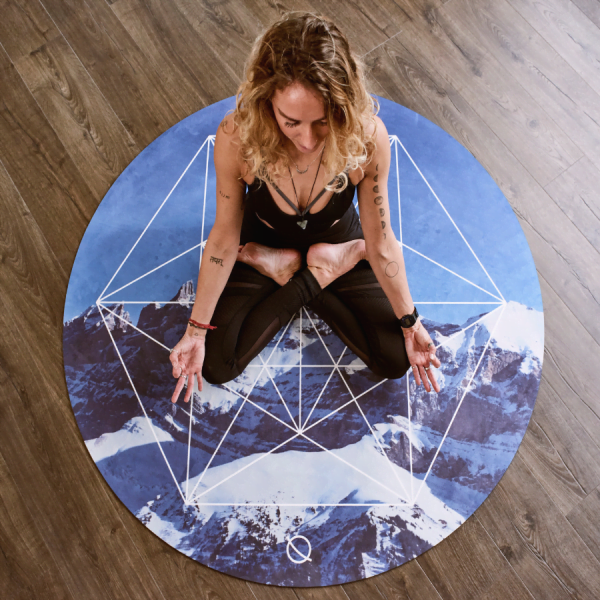History Of Hypnosis:
How Hypnosis is Used From Ancient Times to Now

Introduction:
Hypnosis is a practice that has been around for centuries and has been used for a variety of purposes. From its origins in ancient civilizations to its modern-day applications, hypnosis has been the subject of much debate due to the misleading information from movies and TV. In this article, we will explore the rich history of hypnosis and its evolution over time.
The Origins & History of Hypnosis
Hypnosis has been used in various forms for thousands of years. The ancient Egyptians and Greeks used hypnotic techniques to heal the sick and induce sleep. The father of modern medicine, Hippocrates, wrote about the power of suggestions and the use of hypnosis in healing.
Sigmund Freud was Fascinated by Hypnotism
Sigmund Freud was an Austrian neurologist and the founder of psychoanalysis. He was fascinated by the idea of hypnotism and studied it with French physician Bernheim. Freud believed that hypnotism could tap into an individual’s suggestibility, providing access to repressed memories and facilitating the release of emotional distress.
However, he eventually dropped hypnotism as a therapeutic technique and developed his own method of treatment called psychoanalysis. Not many people know that Hypnosis has played an important role in the development of his theories and methods.
The Emergence of Mesmerism
In the late 1700s, a German physician named Franz Anton Mesmer introduced the world to the concept of mesmerism. Mesmer believed that there was a universal fluid that flowed through all living things and that this fluid could be harnessed to heal the body. He used hypnosis and suggestion to help his patients and became known as the father of modern hypnosis.
The Development of Hypnotherapy
In the late 1800s, a Scottish surgeon named James Braid began studying hypnosis and its effects on the human mind. He coined the term “hypnotherapy” and developed the first systematic approach to using hypnosis for therapeutic purposes. Braid’s work laid the foundation for modern hypnotherapy and helped to establish it as a legitimate therapeutic tool. In the 1950s and 1960s, hypnotherapy became extremely popular as a tool for weight loss and smoking cessation.
The Evolution of Hypnosis in the 20th Century
Hypnosis has been used in a variety of settings throughout the 20th century. Here are some examples:
clinical hypnosis setting: Hypnosis has been widely used in clinical settings as a form of therapy to treat various mental and physical health conditions. It has been used to treat anxiety, depression, phobias, addiction, and chronic pain, among other conditions.
Entertainment: Hypnosis has been used as a form of entertainment in stage shows and performances.
Law enforcement: Hypnosis has been used in law enforcement settings to assist in criminal investigations. Hypnosis has been used to help witnesses recall details about a crime scene or to help victims remember details about their attacker.
Education: Hypnosis has been used in educational settings to help students with memory recall and concentration. Hypnosis has also been used to help students overcome test anxiety and improve their academic performance.
Sports: Hypnosis has been used in sports to help athletes improve their performance. Hypnosis has been used to help athletes overcome performance anxiety, improve their focus, and increase their confidence.
Self-improvement: Hypnosis has been used as a self-improvement tool to help people overcome bad habits, such as smoking or overeating, and to improve self-esteem and confidence.
Overall, hypnosis has been widely used in various settings throughout the 20th century and continues to be used today for a variety of purposes.
Conclusion:
Hypnosis has a rich and fascinating history, from its origins in ancient civilizations to its modern-day applications. Hypnosis continues to be used as a therapeutic tool by psychologists, psychiatrists, hypnotherapists and other healthcare professionals. There is no denying the impact that hypnosis has had on the world and the lives of countless individuals. Want to achieve your goal but not sure how? Book a FREE Strategy Call with us now to learn more.
Frequently Asked Questions:
What was hypnosis originally used for?
Hypnosis was originally used in the 18th century by Austrian physician Franz Mesmer for medical treatment and relaxation. It was later adopted for psychological and therapeutic purposes.
What was hypnosis originally called?
Hypnosis was originally called “mesmerism,” named after German physician Franz Mesmer who believed in the power of a mysterious force he called “animal magnetism.” He used this concept to explain the hypnotic trances he induced in his patients in the late 1700s.
Who first discovered hypnosis?
James Braid is widely credited as the first person to discover hypnosis. He was a Scottish surgeon who wrote about hypnosis in the early 19th century and coined the term “neuro-hypnotism”. Braid’s work laid the foundation for the modern understanding of hypnosis.



